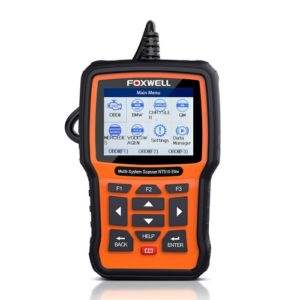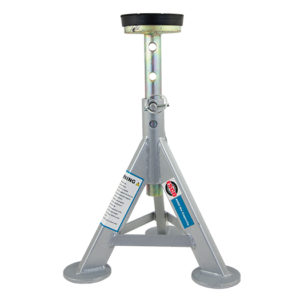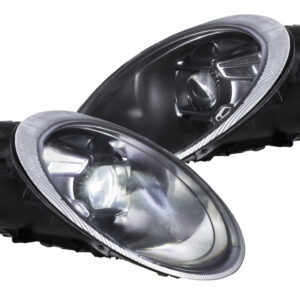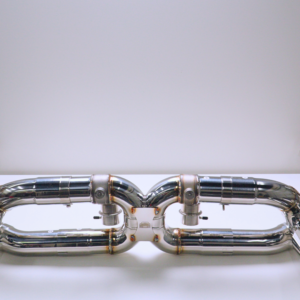Your engine uses a serpentine belt to power the accessories like the power steering and water pumps. Over time, the belt gets worn out and can slip or even break. Visually inspect your serpentine belt for cracks, fraying, and other damage. In any case, it is a good idea to replace your serpentine belt according to the manufacturer’s recommended service interval.
Fortunately, replacing the serpentine belt yourself on a Porsche 996 is very straight forward. To get an overview of the procedure, you can check out the above video from Heidi and Franny’s Garage . Detailed steps can be found below.
Intake Air Hose Clamp: 7.5 ft-lbs (or hand tighten just snug)
13mm crankshaft pulley bolts: 17 ft lbs.
Step 1: Prepare your vehicle and work area
- Ensure engine is cold, so you don’t burn yourself.
- Put on eye protection and gloves.
- Gather parts and tools.
- Open engine cover.
Step 2: Remove the engine air box
- Unbolt the airbox using 13mm socket.
- Loosen the hose clamp on intake tube with flat head screwdriver.
- Unplug the mass air flow (MAF) sensor by depressing a plastic tab and pulling the sensor out.
- Remove the MAF sensor wiring harness from the plastic loop connector on the airbox.
- Remove the airbox from the engine bay by carefully rotating it counterclockwise and pulling it out.
- Now, the serpentine belt should be revealed.
Step 3: Cover the throttle body and air intake hose to prevent debris from getting inside
Step 4: Remove the serpentine belt
- IMPORTANT: Take a picture of the arrangement, so you know how the new serpentine belt should go.
- To remove the serpentine belt, you will need to remove the crankshaft pulley (largest silver pulley).
- Start by just breaking loose the three 13mm bolts that hold the crankshaft pulley, but do not remove the bolts.
- Next, remove the old serpentine belt from the pulleys.
- Use a 24mm wrench to turn the tensioner pulley clockwise; this will reduce the tension on the serpentine belt, so you can pull it out. Alternatively, you can use a 15mm socket, extension, and breaker bar to rotate the smaller bolt on the tensioner pulley.
- Now remove the 13mm bolts holding the crankshaft pulley and remove the crankshaft pulley; this will allow you to pull the old serpentine belt out.
- Inspect each of the pulleys; if any of the pulleys do not spin freely or have excess play, it is a good idea to replace them.
Step 5: Install the new serpentine belt
- Loop the new serpentine belt in the exact same fashion as the original one, but don’t loop it around the alternator pulley (top left most pulley); this will give you enough slack to reinstall the crankshaft pulley.
- Reinstall the crankshaft pulley; apply medium strength threadlocker to the 13mm bolts and screw them in but don’t fully tighten them.
- Loop the serpentine belt over the crankshaft pulley.
- To get the serpentine belt over the final alternator pulley, turn the tensioner pulley clockwise; it will take some effort to get the belt over the final pulley.
- Once the new serpentine belt is in place, slowly release the tensioner pulley.
- Torque the 13mm bolts on the crankshaft pulley to 17 ft-lbs.
Step 6: Reinstall everything in reverse
- Reinstall the airbox in the exact same fashion.
- Torque the airbox hose clamp to 7.5 ft-lbs or just snuggly tighten it by hand.
- Clean up your work area and put away your tools.
- You’re all done!






